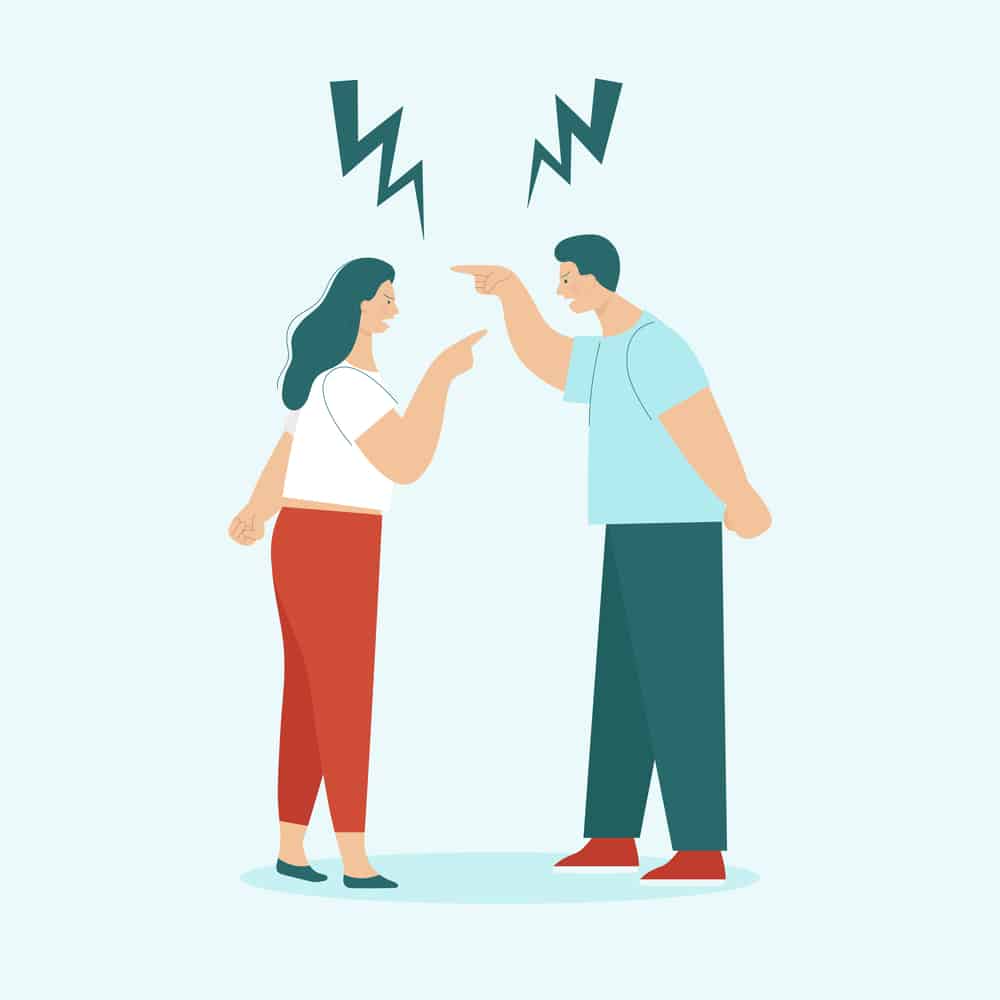ESTP and INTP: Compatibility, Love, Marriage, and Romance
I. COMPATIBILITY
Generally considered to be compatible personality types, ESTPs and INTPs have the potential to form meaningful and mutually-beneficial relationships. Like all Myers-Briggs personality type pairings, the ESTP/INTP couple will have some differences they’ll have to navigate, but they have a more than a reasonable shot at long-term happiness.
SUMMARY CHART: ESTP AND INTP COMPATIBILITY VERSUS POSSIBLE CONFLICTS
| COMPATIBILITY | POSSIBLE CONFLICTS |
| ESTPs and INTPs value freedom in their schedules | ESTPs and INTPs have different social needs |
| These types have complementary communication styles | Traditional versus progressive values |
| Both types value logic and objectivity | ESTPs and INTPs share a high tolerance for disorganization |
| Neither type is prone to becoming overly-emotional | Different communication styles |
THREE REASONS WHY ESTPs AND INTPs ARE GOOD FOR EACH OTHER
Though different in many ways, ESTPs and INTPs can benefit each other. Some of the reasons these types may be good for each other are:
- ESTPs and INTPs both value reason and logic
- Complimentary communication styles
- These types prefer a degree of freedom in their schedules
ESTPs and INTPs are personality types that place a high value on logic. Neither type is liable to become overly or needlessly emotional when confronted with a problem. This puts the ESTP/INTP couple on sound footing regarding conflict resolution.
Though dissimilar, the communicative styles of ESTPs and INTPs can complement one another. Under normal circumstances, the INTP will fall into the role of listener, while the naturally more expressive ESTP does most of the speaking. This unspoken arrangement is often suitable for both partners.
ESTPs and INTPs prefer to leave some room in their schedules for spontaneity. Both types value freedom and see rigid schedules as a governer on their independence.
THREE REASONS WHY ESTPs AND INTPs ARE NOT GOOD FOR EACH OTHER
Not all ESTP/INTP pairings will be able to navigate their personality differences and enjoy long-term relationships. Three reasons ESTPs and INTPs may potentially not be suitable for each other are:
- ESTPs and INTPs have potentially conflicting values
- These types have very different social needs
- ESTPs and INTPs share a high tolerance for disorganization
Though there is some overlap in what ESTPs and INTPs value, there are also significant differences. ESTPs tend to be traditionalists, while their INTP counterparts look for ways to change and improve upon the status quo. This value mismatch can cause problems between ESTPs and INTPs if they can’t “agree to disagree.”
ESTP and INTPs also have very different needs when it comes to socializing. As extroverts, ESTPs thrive in social situations and use socializing as a means of recharging. The opposite is the case for the INTP, who uses time alone for the same purpose.
These personality types share a high tolerance for disorder in their environments, which can prove problematic. In such situations, one partner often winds up doing most of the straightening up around the house, a condition that can lead to feelings of resentment.
COMMUNICATION
Communication is the cornerstone of every successful human pairing; how a couple interacts with one another is often the difference between a failed relationship and long-term happiness. The ESTP/INTP couple will face their share of communicative challenges, but that doesn’t mean they aren’t equipped to deal with them when they arise.
WHERE ARE THEY STRONG, AND WHY?
Like most extrovert/introvert pairings, ESTP/INTP couples often settle into a comfortable manner of communicating, with the expressive ESTP doing most of the talking and the ISTP most of the listening. By and large, this dynamic is suitable for most situations.
WHERE DO THEY HAVE PROBLEMS, AND WHY?
The extrovert speaker/introvert listener dynamic often serves the ESTP/INTP couple well, but there are times when it falls short. For instance, when having important discussions, the normally reserved INTP may feel verbally overwhelmed by their talkative partner. They may have important things to say and very little chance to say them.
HOW MIGHT THEY IMPROVE COMMUNICATION?
ESTPs and INTPs can improve their communication with a bit of self-awareness and mutual understanding. ESTPs must curb their tendency to fill every conversational gap and be sure to give their partners ample time to be heard. INTPs can help improve communication by stepping beyond what is comfortable sometimes to engage more fully in discussions of significance.
WHERE DO THEY CONNECT, AND WHY?
Generally regarded as a reasonably compatible couple, ESTPs and INTPs often connect through shared interests, working together, or mutual friends. On the first meeting, these types aren’t likely to see much in one another they can relate to; still, it won’t be lost on the INTP that the ESTP seems to have a lot of fun, a trait that is always attractive.
ESTP AND INTP: VALUES
Though both personality types feel strongly about what they value, ESTPs and INTPs tend to value different things. This can be a source of conflict, or an opportunity for growth, depending on how the ESTP/INTP couple chooses to handle such differences.
THREE THINGS AN ESTP VALUES
- Freedom
- Socializing
- Reason and objectivity
Like their INTP counterparts, ESTPs value their personal freedom. They tend not to be rigid schedulers, as they prefer the freedom afforded by a more flexible routine. Extroverted personality types, ESTPs also value social activities and the company of others.
Reason and objectivity are also very important to the ESTP. As thinking personality types, they tend to operate more efficiently in the realm of reason rather than feeling.
THREE THINGS AN INTP VALUES
- Reason and objectivity
- Time alone
- Innovation
One thing ESTPs and INTPs have in common is an appreciation of the value of reason. Both personality types resort first to logic before emotional considerations. Time alone is also valued highly by the INTP. Unlike ESTPs, INTPs need time alone to process and unwind.
INTPs are innovators who value positive change. Unlike their ESTP counterparts, who are at best wary of change, INTPs always look for ways to improve what already exists.
HOW DO THEIR VALUES MATCH UP?
While there is some overlap in what ESTPs and INTPs value, there are some significant differences too. The ESTP/INTP couple will have to be okay with “agreeing to disagree” on some critical issues if they’re to enjoy a long and healthy relationship.
LOVE LANGUAGE/LOVE STYLE
ESTPs and INTPs tend to show love in similar ways; spending quality time and physical touch are two of both personality’s top three love languages.
WAYS ESTPs SHOW THEIR LOVE
- Spending quality time with their partner
- Performing acts of service
- Physical touch
Spending quality time with their partner is the number one way most ESTPs choose to express their feelings. Performing acts of service for their significant others comes in at number two, followed by physical touch.
WAYS INTPs SHOW THEIR LOVE
- Quality time
- words of affirmation
- Physical touch
Like their ESTP counterparts, INTPs spend quality time with their partners as a way of showing their love. The second most common way this type expresses affection is through words of affirmation, a significant gesture given the introverted nature of the INTP.
The third most common way INTPs show their love is through physical touch, another love language they share with their ESTP partners.
ESTP AND INTP IN BED
ESTPs and INTPs both have passionate, at times intense, sexual energy. Both are generally adventurous in bed and willing to try new things, so intimate relations between these types aren’t likely to become routine or boring.
II. ESTP AND INTP COUPLES/MARRIAGE
HOW DO ESTPs AND INTPs MATCH UP IN LONG-TERM ROMANTIC RELATIONSHIPS?
ESTP MALE AND INTP FEMALE
The ESTP male/INTP female couple has a good chance of achieving long-term happiness if the INTP female doesn’t feel relegated to the margins of important discussions. On the other hand, the ESTP male may resent his introverted partner’s seeming unwillingness to engage socially.
ESTP FEMALE AND INTP MALE
Like the ESTP male/INTP female couple, this couple, too, has a good shot at happiness. Problems may arise, though, should the ESTP female misinterpret her partner’s need for time alone as an unwillingness to participate in social activities. Conversely, the INTP male may become resentful if his partner is constantly prodding him to be more social than is comfortable.
III. ESTJ AND INTP CONFLICTS
POSSIBLE AREAS OF CONFLICT (AND WHY)
- ESTPs are innovators, while INTPs tend to be traditionalists
- These types sometimes have difficulty making an emotional connection
- ESTPs and INTPs have different social needs
Different and potentially opposing values can prove a source of conflict between partners in an ESTP/INTP relationship. ESTPs tend to be more progressive than their traditionalist INTP partners; this value mismatch can prove problematic for ESTP/INTP pairing.
Both thinking types, ESTPs and INTPs sometimes have difficulty establishing emotional connections. This can prove an obstacle to relationship growth.
The different social needs of ESTPs and INTPs are also potential causes of conflict between ESTP and INTP partners. As mentioned above, these personality types approach socializing very differently; ESTPs are energized by time out with friends and family, while INTPs often feel drained by the same obligations.
HOW DO THEY RESOLVE CONFLICT?
ESTPs and INTPs are both thinking types and will generally attempt to resolve conflict without letting their emotions get the better of them. These types do tend to approach potential conflicts differently, though; ESTPs prefer to address minor problems at once before they worsen, while INTPs tend to put off having potentially troublesome conversations.
HOW DO THEY BUILD TRUST?
Though extroverted and outgoing, ESTPs are generally independent people; as such, they sometimes have difficulty learning to trust others. This isn’t to say ESTPs can’t trust; they can and do rely on others, but only once a certain level of trust has been established over time.
INTPs have more difficulty than their ESTP counterparts when it comes to trusting others. Like ESTPs, they are very independent folks, hesitant to place trust in people, but they also have difficulty expressing emotions. Because of this, INTPs rarely open up to the degree necessary to establish trust.
IV. ESTP AND INTP FRIENDSHIPS
Despite their significant differences, and in some cases because of them, ESTPs and INTPs can make great friends. Each type stands to grow as a result of an ESTP/INTP friendship.
ESTP AND INTP: APPROACH TO FRIENDSHIP
Though the INTP is likely to be attracted by the fun-loving personality of the ESTP, odds are it will be the outgoing ESTP who makes the first move in a potential ESTP/INTP friendship.
ESTP AND INTP FRIENDSHIP DYNAMICS
ESTPs and INTPs are often drawn to one another because each sees in the other qualities they’d like to exhibit themselves. The INTP is likely to be attracted by the bold, assertive manner of the ESTP, while the ESTP is often drawn to the INTPs sharp intelligence and quick humor.
WHAT MAKES THEM GOOD FOR EACH OTHER AS FRIENDS?
There are many reasons ESTPs and INTPs may be good for each other as friends. For one, the ESTP can help the introverted INTP better navigate social situations; conversely, the INTP can remind their outgoing friend of the value of some quiet time for reflection.
COULD THEY BE CLOSE FRIENDS?
Despite their differences in personality, ESTPs and INTPs have the potential to become close, even lifelong friends.
WHAT ARE SOME AREAS THAT MIGHT CAUSE THEM PROBLEMS AS FRIENDS?
Not all ESTP/INTP friendships stand the test of time; when trouble arises between ESTP/INTP friends, it often has to do with their different social needs or their vastly different values. If, for example, the INTP feels pressured into social commitments by their ESTP friend, resentment is likely to result.
As mentioned earlier, these two Myers-Briggs personality types value some very different things; ESTPs look for ways to innovate and improve existing systems, while the more traditional INTP can be reticent or even resistant to the idea of change.




